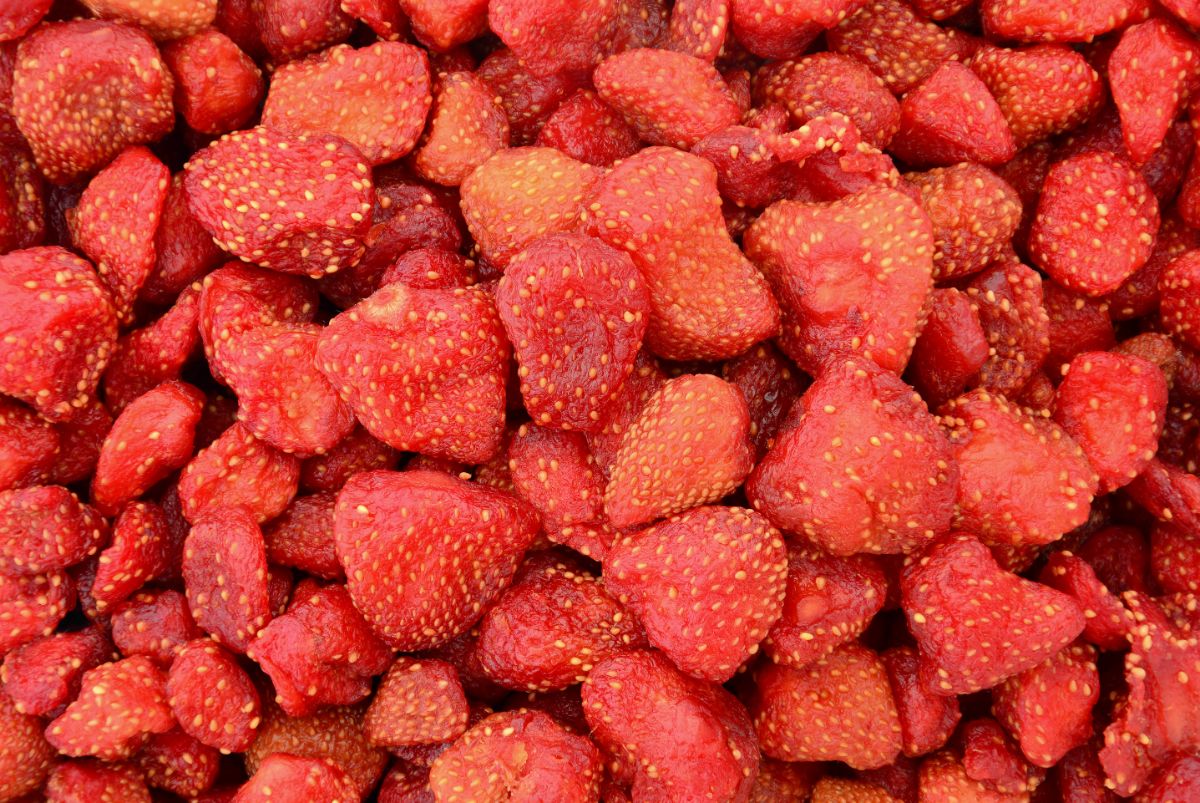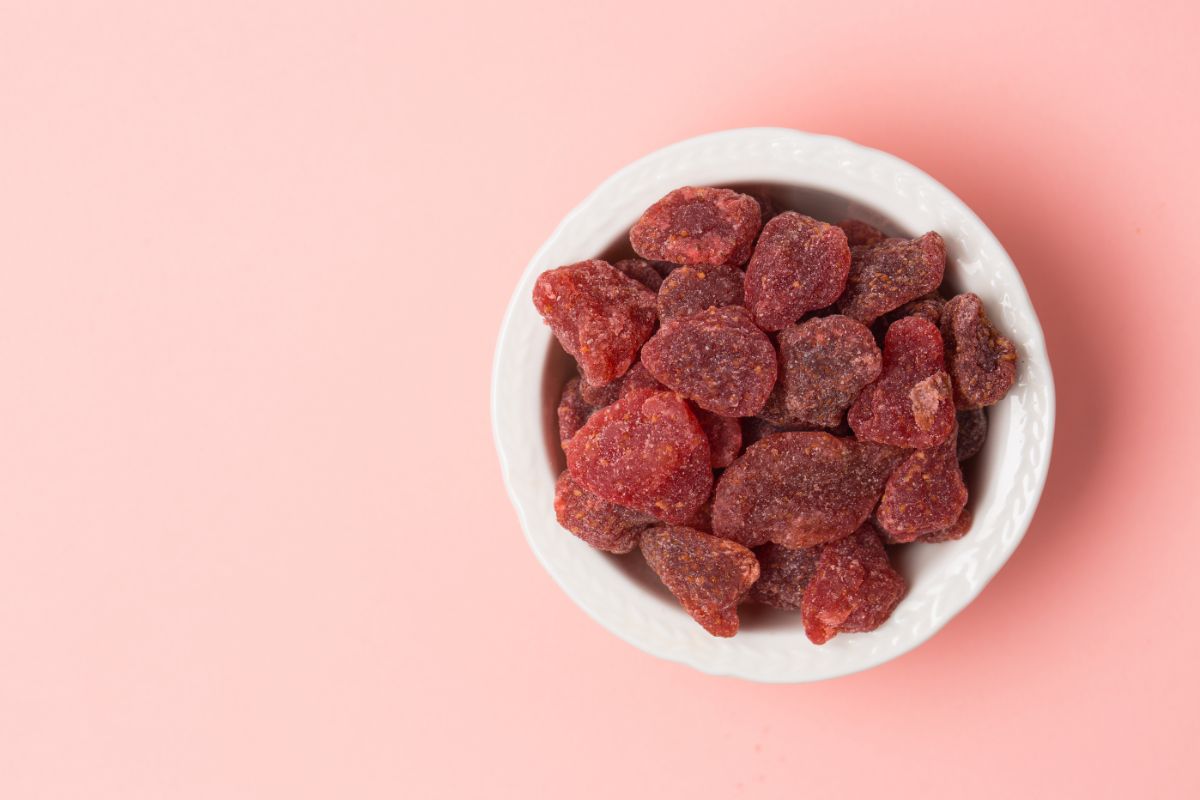Sun drying strawberries is a viable way to preserve them. There are many things that cannot be adequately dried in the sun (most vegetables and meats), but the high sugar and acid content of strawberries makes them well-suited to outdoor sun drying. Their low protein concentration minimizes the likelihood of bacterial/microbial overgrowth (as happens with meats).

Jump to:
Conditions Needed When Sun Drying Strawberries
Drying strawberries outside cannot be done just anywhere. The proper conditions are needed if successful drying it to occur. The necessary conditions are:
1. Warm Temperatures – a minimum temperature of 85 degrees Fahrenheit is required, with warmer temperatures being even better. In most locations, the strawberries will need to be brought in at night to keep the cooler night air from condensing and adding moisture back into the partially dried strawberries.
2. Favorable Weather – simply put, rain ruins everything. If it rains, all the fruit that is rained upon will likely be lost.
3. Low Humidity – a humidity below 60% is the best for drying strawberries. Many times, the conditions that help ripen strawberries preclude them being dried outside. This is particularly true in Southern states where humidity is often a prohibitive factor.
4. Air Flow – a constant breeze is needed to dry strawberries effectively. Prolonged periods of stagnant air are unacceptable.
Equipment Needed to Sun Dry Strawberries

It is best to dry strawberries over a reflective surface on mesh or drying racks that allow air to freely flow around the fruit. A tin or aluminum sheet works well underneath to reflect light back up under the strawberries and speed the drying process. If no aluminum or tin is available, concrete will serve as an adequately reflective surface.
The racks should be placed on blocks above the reflective surface. Ideally, the racks/screens are either stainless steel, teflon-coated fiberglass, or plastic. Do not use hardware cloth (galvanized). These are coated with zinc or cadmium and will rust quickly, especially with the acidic strawberries resting atop them. As this occurs, harmful residues will affix themselves to the strawberries. Additionally, do not use aluminum (it will discolor and corrode) or copper (it destroys Vitamin C and increases oxidation).
After the blocks and screens are in place, they need to be covered. Another screen works well as a cover to protect the drying strawberries from nature’s thieves. Cheese cloth can also be used.
Sun Drying Strawberries: Other Considerations
The out-of-doors is inherently variable. In most outdoor locations, particulate matter, spores, pollen, and who knows what else will be floating by on the currents of air. Of course, simplifying the process and just using an indoor dehydrator can save time, effort, concern over varmits, birds, and bugs, and possible contamination/loss of your harvest. For those reasons, we think it best to wash and then dry/dehydrate your strawberries inside.










Leave a Reply